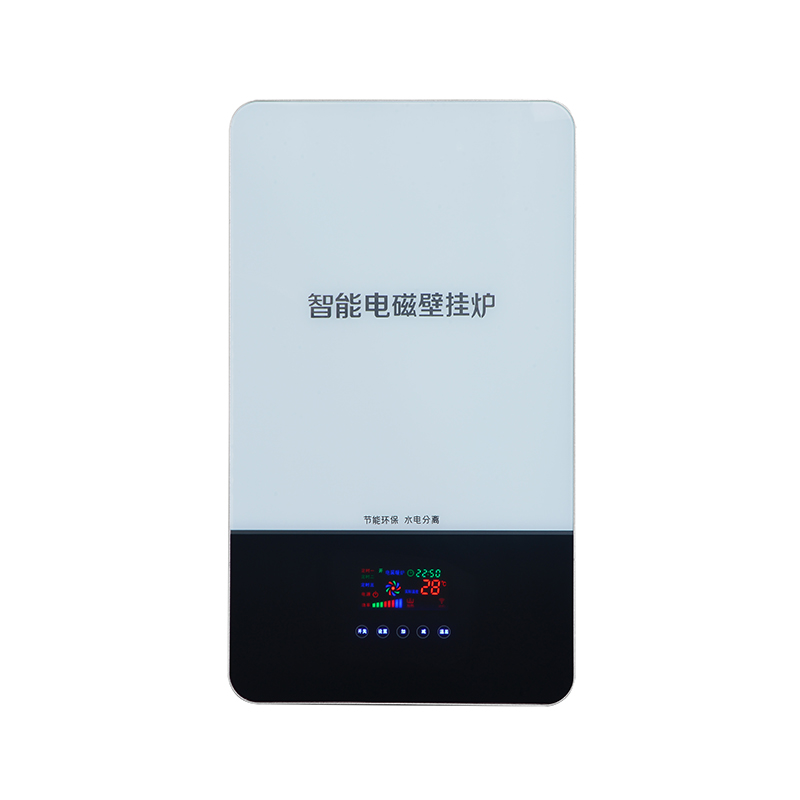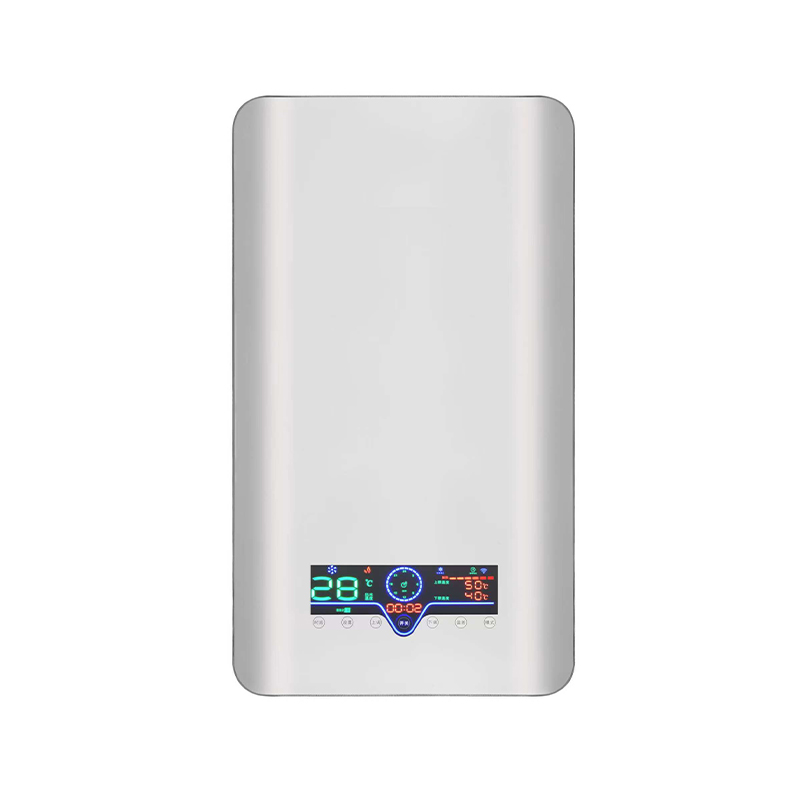What is the relationship between the magnetic field strength and heating power of electromagnetic heating furnace?
Release Time : 2025-07-17
The alternating magnetic field of the electromagnetic heating furnace causes the pot to generate eddy current heating, which is the result of the combined action of electromagnetic induction and Joule heating effect. The relationship between magnetic field strength and heating power relies on the basic laws of electromagnetism and is also restricted by material properties and structural design.
The generation of alternating magnetic field is the prerequisite for the formation of eddy current. The core component of the electromagnetic heating furnace is the coil wound under the microcrystalline glass plate. When the coil is passed through a high-frequency alternating current (usually 20-50kHz), according to Maxwell's equations, the periodic change of the current will stimulate the surrounding space to produce an alternating magnetic field. This magnetic field spreads around the coil, its intensity decays with increasing distance, and its direction is synchronously reversed with the direction of the current, forming a dynamically changing magnetic field environment. The choice of high-frequency current is the key - compared with industrial frequency current (50Hz), high-frequency current can greatly increase the rate of change of the magnetic field, providing sufficient energy gradient for the subsequent generation of eddy currents.
The eddy current inside the pot originates from the induced electromotive force caused by the change of the magnetic field. When a pot made of conductive material (such as an iron pot or a stainless steel pot) is placed in an alternating magnetic field, the magnetic flux of the magnetic field will pass through the metal matrix of the pot. Since the magnetic flux changes rapidly over time, a closed electromotive force will be induced inside the pot according to Faraday's law of electromagnetic induction. The good conductivity of the metal causes this electromotive force to drive the free electrons to flow in a directional manner, forming a closed loop current, namely "eddy current". The path of the eddy current is perpendicular to the direction of the magnetic field, forming a vortex-like circular current at the bottom of the pot. Its distribution range depends on the coverage area of the magnetic field, and is usually concentrated in the bottom area corresponding to the pot and the coil.
The thermal effect of the eddy current is directly converted into the heat output of the pot. When the eddy current flows inside the pot, it will be hindered by the metal resistance. According to the Joule-Lenz law, when the current passes through the resistance, it will convert electrical energy into heat energy. The greater the resistance and the stronger the current, the more heat will be generated. Ferromagnetic materials such as iron pots not only have good conductivity, but also have high magnetic permeability, which can enhance the penetration depth of the magnetic field inside the material, make the eddy current distribution more uniform, and cover a wider range of heat. This heat is generated by the pot itself, not by external heat source conduction, so the heating speed is much faster than traditional open flame or electric heating wire heating, and the heat is concentrated at the bottom of the pot, reducing energy waste.
The relationship between magnetic field strength and heating power is based on the quantitative relationship of energy conversion. Magnetic field strength is a physical quantity that describes the strength of the magnetic field, and its magnitude is directly related to the current strength in the coil, the number of coil turns, and the core structure. When the material and structure of the pot are fixed, the greater the magnetic field strength, the higher the rate of change of the magnetic flux passing through the pot, and the greater the induced eddy current strength - according to the laws of electromagnetism, the square of the eddy current is proportional to the square of the magnetic field strength, and the heating power (energy conversion rate) is proportional to the square of the eddy current, so the magnetic field strength and heating power are positively correlated: when the magnetic field strength increases, the heating power will increase significantly.
This relationship is not infinitely linear, but is limited by the physical limits of materials and circuits. When the magnetic field strength increases to a certain critical value, the ferromagnetic material of the pot will enter a magnetic saturation state. At this time, the magnetic flux no longer increases significantly with the increase of the magnetic field strength, and the eddy current growth rate slows down, resulting in a weakened increase in the heating power. At the same time, the current strength in the coil determines the upper limit of the magnetic field strength. Excessive current will cause the coil to heat up severely, exceeding the tolerance temperature of the insulation layer, and even causing a short circuit. Therefore, in actual design, a current limiting protection circuit is required to control the magnetic field strength within a safe range.
The characteristics of the pot will adjust the actual correlation effect between the magnetic field strength and the power. Although non-magnetic conductive materials (such as copper pots) can generate eddy currents, due to low magnetic permeability, shallow magnetic field penetration depth, eddy currents are concentrated on the surface, and the heating power under the same magnetic field strength is lower than that of iron pots; and too thin pots will shorten the eddy current path, increase resistance, and increase heat loss, resulting in actual output power lower than the theoretical value. Therefore, electromagnetic heating furnaces usually require pots to be ferromagnetic and of moderate thickness (generally ≥2mm) to maximize the use of magnetic field strength and achieve efficient power conversion.
The coil design enhances the stability of power output by optimizing the magnetic field distribution. The winding density, shape and matching degree of the coil with the bottom of the pot will affect the spatial distribution of the magnetic field strength. Densely wound coils can generate stronger magnetic fields in the central area, making the heat in the center of the bottom of the pot more concentrated; while the ring-shaped coils can make the magnetic field evenly covered to avoid local overheating. This design allows the magnetic field strength to remain stable within the effective area, ensuring that the heating power can not only meet the needs of rapid heating, but also achieve smooth switching of power levels by adjusting the current (i.e. adjusting the magnetic field strength), adapting to different scenarios such as stewing and stir-frying.
The alternating magnetic field excites eddy currents in the pot through electromagnetic induction, and the Joule heating effect of the eddy currents achieves heating; the magnetic field strength determines the heating power by affecting the size of the eddy currents. The relationship between the two is jointly restricted by material properties, circuit protection and structural design, and ultimately achieves a stable heating function in the balance between safety and efficiency.





